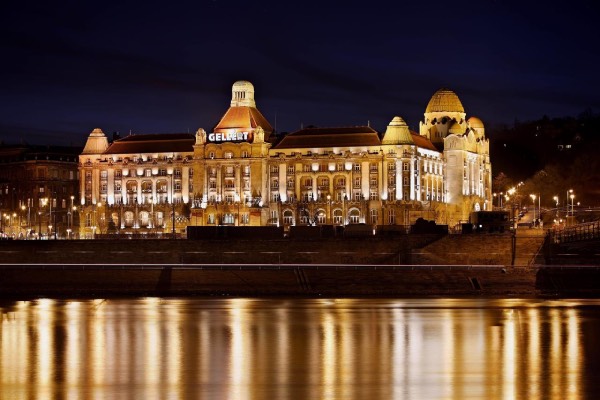Mandarin Oriental has expanded its presence in Europe with the addition of two iconic properties. The Hong Kong-based luxury hospitality group has opened Mandarin Oriental Savoy, Zurich, in Switzerland, its third property in the country.
Meanwhile, Mandarin Oriental will be venturing into a new market, Hungary, with the restoration and renovation of the landmark Gellért Hotel in Budapest.
These two European properties will add to Mandarin Oriental’s existing portfolio of 38 hotels and 11 residences across 25 countries.

MANDARIN ORIENTAL SAVOY, ZURICH
Situated on the famed Paradeplatz, Mandarin Oriental Savoy, Zurich first opened on Christmas Eve in 1838 when Johannes Baur, a young baker from Austria’s Vorarlberg, founded Zurich’s first-ever grand hotel.
Reopening under the Mandarin Oriental brand after undergoing multi-million-dollar renovations, the 80-key hotel has been reimagined by Paris-based interior designer Tristan Auer, who has merged historical details with a modern style. The hotel features 44 rooms and 36 suites with terraces and private rooftops offering views of the city and the Swiss Alps.
Guests can also access four restaurants and bar concepts — the French-inspired Savoy Brasserie & Bar, fine-dining Italian restaurant ORSINI, a lounge and a rooftop bar, which will open next spring.
The hotel includes over 700 square meters of meeting and events space, with a protected guild hall and a grand ballroom.
To celebrate the hotel’s original opening date and the spirit of Christmas, Mandarin Oriental Savoy, Zurich has collaborated with luxury jeweler Harry Winston to create Christmas trees for the hotel’s lobby, restaurants and signature suites.
The hotel has welcomed several famous names over the years. In 1845, pianist and composer Franz Liszt lived in the Hotel Baur during the Beethoven Festival, while author Charles Dickens stayed at the landmark hotel with his family.

GELLÉRT HOTEL, BUDAPEST
Owned by the BDPST Group, this landmark hotel first opened doors in 1918 and went on to become one of Budapest’s most iconic grand hotels. Located on the Buda side of the city, the hotel will be renamed Mandarin Oriental Gellert, Budapest.
The hotel is expected to reopen in 2027, sporting a revitalized Nouveau architectural design.
The luxury hotel will have a special focus on wellness, driven by the city’s popular thermal bathing culture, which dates back to the Roman era. Mandarin Oriental plans to revive this feature and create a new spa in the hotel.
The Spa at Mandarin Oriental Gellert, Budapest, will have seven experiential areas offering modern wellness and aesthetic treatments, which include exclusive bathing experiences merging Mandarin Oriental’s signature Asian therapies with Eastern European spa and beauty treatments.
The hotel will also offer a fitness and movement studio and an indoor pool on the top floor under a retractable glass ceiling with a vitality tub, sauna, cold plunge pool and outdoor relaxation area. This will be adjoining a rooftop bar with views of the Pest side of the city and the Danube River.
Alexander Waterworth, the London-based interior design studio, will lead the transformation of the 143 rooms and suites, wellness areas and public spaces. The design studio had earlier partnered with Mandarin Oriental for the Mandarin Oriental, Costa Navarino.
Big open areas on the ground and first floor will house an indoor-outdoor specialty restaurant offering views of the city and the Danube River. The hotel will also open a patisserie and café and a restored Art Nouveau ballroom for events.
“The Gellért Hotel is perhaps the most iconic building in Budapest, one that is close to the hearts of most Hungarian people. While we view it as an exciting real estate development project, we also bear tremendous responsibility towards both the building and its history, as well as the residents of Budapest,” said István Tiborcz, owner and president, BDPST Group. “That’s why it was particularly important for us to entrust the operation of this historic building to a company of such caliber. The Mandarin Oriental combines this expertise with the culture of the respective country, highlighting unique design elements while respecting the heritage and Hungarian roots of the Gellért Hotel.”
